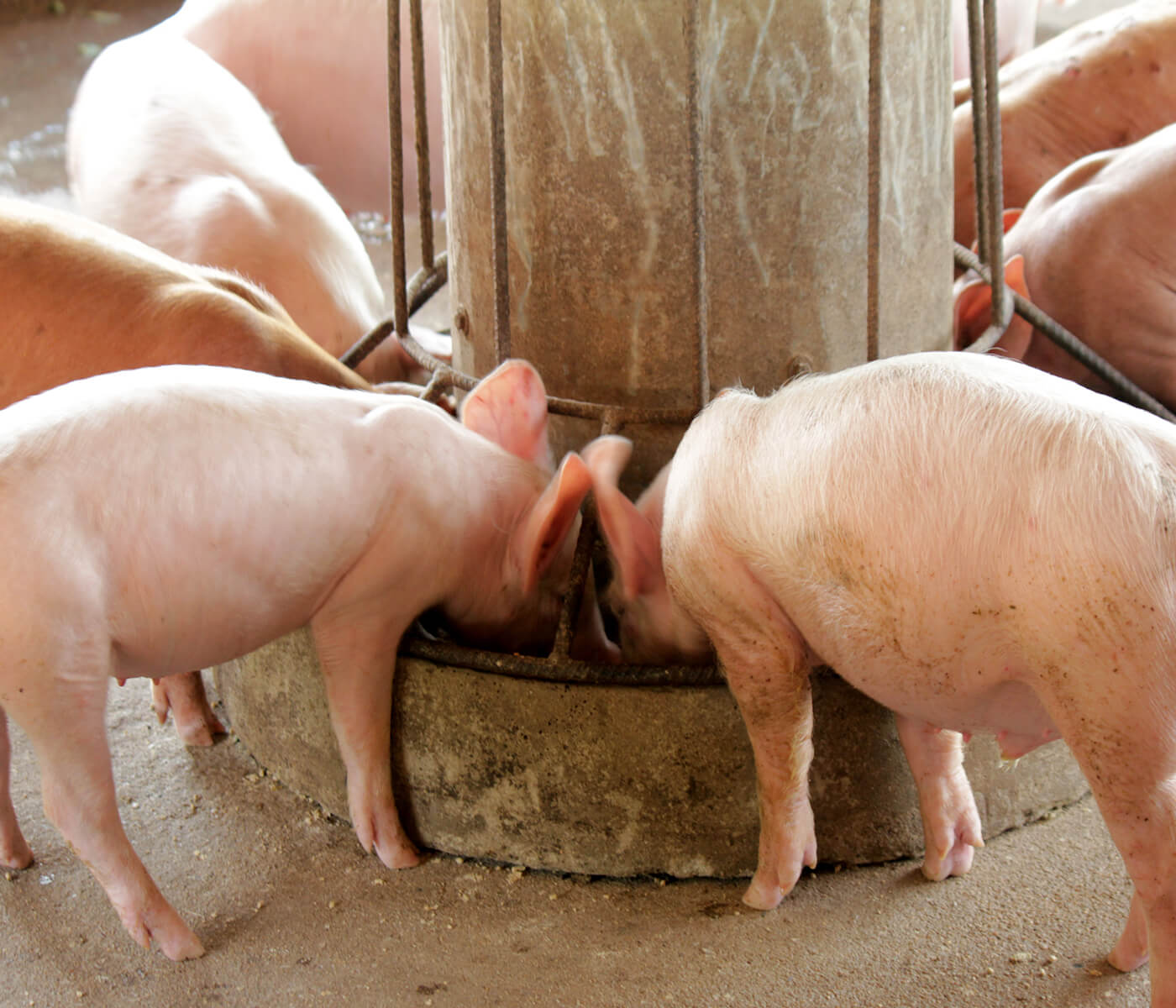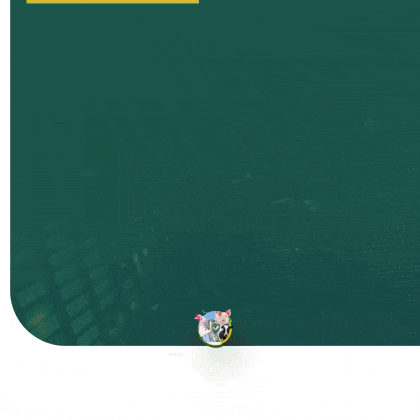Lignocellulose should be considered as a tool that contributes to the reduction of antibiotic use in pig farms.
Weaning is considered as one if not the most demanding phase in a piglet’s life. During this period animals are challenged with significant stress, causing negative impacts on performance and in some cases this can even result in mortality.
The physiological aspects of weaning have been widely discussed by Lallès et al. (2007) and Montagne et al. (2007) who suggested that this process can be divided into 2 well-defined stages:
1 Acute phase
2 Regenerative phase
1 Acute Phase
The first of these stages, lasts approximately one week after weaning, and it is characterized by marked variations in the structure and function of the gastrointestinal tract, coupled with reductions in feed intake.
There is no current consensus amongst authors regarding the mechanisms through which post-weaning stress affects the intestinal structure.
Pluske and Williams (1996) indicated that changes in enzymatic activities and gut morphology observed in weaning piglets could be directly triggered by stress or by reduced daily consumption. Considering the fact that anorexia is common during this stage.
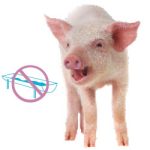
Brooks et al. (2001) concluded that approximately 10% of animals weaned at 28 days of age do not eat any food during the first 48 hours.
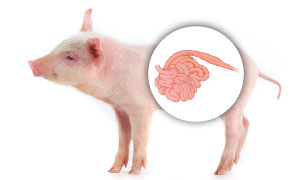
This results in a lower production of hydrochloric acid (HCl) by the parietal cells of the stomach, which hinders the beginning of the digestion process. This leads to intestinal modifications such as a reduction in enzymatic activity at the brush border, which causes an accumulation of digestive content in the distal sector of the intestine. This in turn increases the risk of post-weaning diarrhea due to bacterial proliferation (Kenworthy and Allen, 1966; Hampson, 1986).
2 Regenerative phase
The second phase lasts from 7 to 15 days post-weaning and is a period characterized by the piglet’s progressive adaptation to the solid diet.
Amongst the noticeable changes during this period, there is an increase in size of the jejunum mucosa thanks to greater nutrient availability within the intestinal lumen, which promotes the growth of intestinal villi. In addition, the size of the pancreas increases during this stage, recovering enzymatic activity (Montagne et al., 2007).
What is the role of lignocellulose in preventing diarrhea?
Considering the fact that every year new regulations are implemented in regards to antibiotic use, lignocellulose presents itself as an additive with various functions that can help avoid post-weaning diarrhea, and modulate the piglet’s intestine.
 By definition, lignocellulose refers to the dry plant matter that constitutes the woody cell walls of plants. Composed essentially by intimately associated cellulose and lignin. In its classification as dietary fiber it is grouped as an insoluble fiber with low fermentability.
By definition, lignocellulose refers to the dry plant matter that constitutes the woody cell walls of plants. Composed essentially by intimately associated cellulose and lignin. In its classification as dietary fiber it is grouped as an insoluble fiber with low fermentability.
Mentioning lignocellulose or insoluble fiber as a beneficial feed additive that can contribute to controlling piglet diarrhea seems somewhat crazy. However, reality has shown quite the opposite.
When talking about fiber in diets, the first thing that comes to mind is that this nutrient dilutes other nutrients within the ration, which results in diets with lower energy and protein values.
On the other hand, fiber is an indigestible substrate for piglets, as these lack specific enzymes for its digestion.
Lignocellulose has a low fermentation capacity. However, it is sufficient to modulate the gut environment and produce short-chain fatty acids (SCFAs).
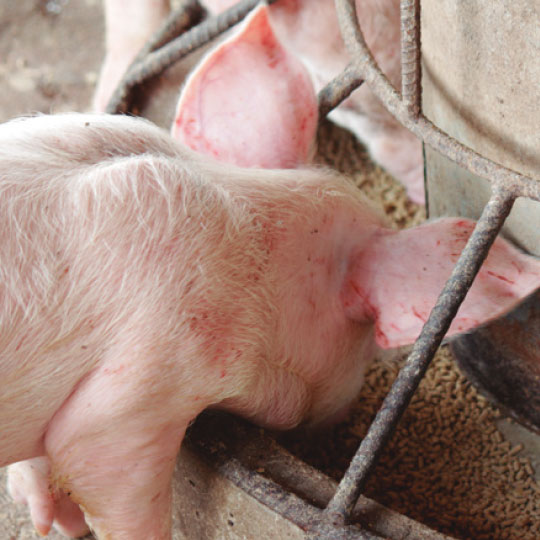
What happens in the piglet’s stomach?
Weaning effect
The stomach of lactating piglets has a low retention capacity. This has to do with the fact that milk is a highly digestible food source, and does not require excess stomach degradability.
Therefore, understanding the physiology of this organ is fundamental when transitioning from a liquid diet to a solid diet.
Another point to consider is the acid absorption rate provided by each of the ingredients within a solid ration.
This index is defined as the resistance presented by a specific feed source towards the pH reduction exerted by gastric acid.
There are ingredients such as proteins, calcium, phosphorus and zinc oxide which provide a level of resistance against gastric acidity.
This effect results in poorly digested chyme passing into the intestine. The presence of poorly digested chyme in the intestinal lumen favors exponential bacterial growth and leads to the onset of post-weaning diarrhea.
Effects of lignocellulose
The effects of lignocellulose on the stomach are the following:
The inclusion of insoluble fiber increases stomach size. This generates increased production of hydrochloric acid which reduces the pH of stomach content(Fliss, M., 2017).
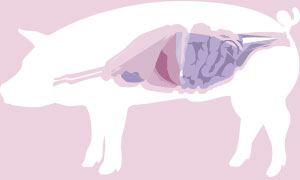
Lignocellulose has the characteristic of binding water. This characteristic allows to reduce gastric emptying, which modifies stomach peristalsis, and generates changes in the mixing. Gastric retention increases protein digestion and starch breakdown.
Lignocellulose stimulates feed consumption, which in turn stimulates the stomach to produce more hydrochloric acid.
And in the gut?
Weaning effect
At the small intestine level, the effects of weaning are negative. This includes:
1 Reduced intestinal transit, due to multiple factors, such as: decreased enzyme activity, inflammation, reduced intestinal muscle tone.
When chyme is present under reduced intestinal movement, bacterial proliferation and the subsequent onset of diarrhea are common consequences.
2 During the first 4 days of weaning, villi length becomes seriously reduced and crypts become deeper.
These structures can take 5 to 7 days approximately to recover. This change is related to stress and the lack of feed intake. Which hinders the maintenance of this tissue.
3 Enzymatic reduction within the intestine. The change of diet and lack of appetite, generates a reduction in enzymatic production of the pancreas (maltase and aminopeptidase). This enzymatic reduction results in a greater proportion of undigested chyme. Presenting a larger feed substrate for bacterial colonization.
In their review, Wenke et al, show that when there is a greater amount of undigested chyme within the piglet’s small intestine, microbial activity is not limited to the colon and will reach the upper portions of the intestine.
 The presence of bacteria at the level of the small intestine translates into: greater amounts of bacterial metabolites, toxins, disruption of intestinal integrity, intestinal wall permeability, as well as increased presence of feed-associated antigens within the interior of intestinal walls.
The presence of bacteria at the level of the small intestine translates into: greater amounts of bacterial metabolites, toxins, disruption of intestinal integrity, intestinal wall permeability, as well as increased presence of feed-associated antigens within the interior of intestinal walls.
This imbalance generates a release of proinflammatory cytokines IL1, IL6 and TNF B which increases the risk of intestinal function disorders.
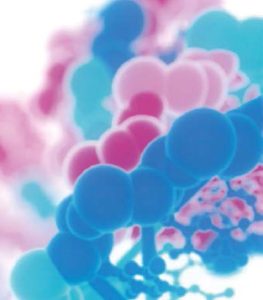
Effects of lignocellulose
Small Intestine
Some of the effects produced by lignocellulose at the intestinal level are:
1 It has the characteristic of binding water, so it does not interfere with the digestion and absorption of nutrients. Differing from soluble fibers which tend to produce viscosity, and limit the functionality of gut enzymes
(Fliss M., 2017).
2 Stimulates peristalsis, which reduces chyme retention at the intestinal level. This property prevents chyme from being colonized by bacteria such as E.coli, generating a lower incidence of post-weaning diarrhea (Hanczakowska, 2008).

3 It generates a mechanical drag at the level of the intestine. This stimulus promotes the growth of intestinal villi. A better development of the intestinal villi,generates a better activity of pancreatic amylase in brush border cells within the small intestine (Gerritsen, R., 2013).
4 The inclusion of insoluble fiber in the gut has been shown to promote goblet cell proliferation. This generates mucin production at the intestinal level. Mucin
represents the first defensive barrier against the adhesion of pathogenic bacteria to the intestinal epithelium (Fliss M., 2017).
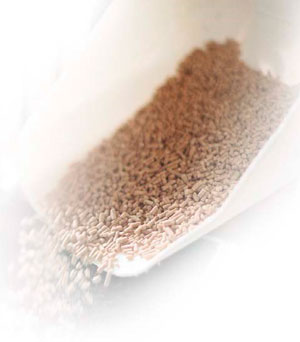
5 The contribution of insoluble fiber in the diet promotes the proliferation of a microbiome composed by beneficial bacteria. This reduces the proliferation of pathogenic bacteria at the intestinal level.
(Hanczaksowska, 2008).
6At the colon level, it provides a longer retention time of digested food. It is within this portion that the greatest microbial activity is observed in pig intestines. This characteristic represents greater fecal volumes.
A longer retention time in the colon allows a more efficient proteolytic fermentation of ammonium and amines. Reducing the concentration of such compounds in piglet feces.
Large Intestine
1 The contribution of insoluble fiber in the diet promotes the proliferation of a microbiome composed of beneficial bacteria. Therefore, the proliferation of pathogenic bacteria at the intestinal level is decreased by this change in bacterial population (Hanczaksowska, 2008).
2 Lignocellulose is an ingredient that increases the concentration of short-chain fatty acids (acetic, propionic and butyric) in the large intestine. The increase in the production of these fatty acids is due to the fermentation generated by the microbiome at this level (Chen, 2019).

3 The presence of insoluble fiber reduces ammonia content in colonic chyme. This can be interpreted as the result of increased nitrogen incorporation into microbial protein due to microbiota growth, estimated by the provision of additional amounts of fermentable energy..
4 Therefore, it is considered an additional benefit for this additive because it reduces endotoxemia generated by protein fermentation and energy expenditure due to urea excretion.
5 The inclusion of insoluble fiber increases the genetic expression of occludin and claudin proteins. These proteins are responsible for keeping the intestinal epithelium attached between cells. When this mechanism is deficient, intestinal permeability occurs, which generates a very strong immune response (Chen, 2013).
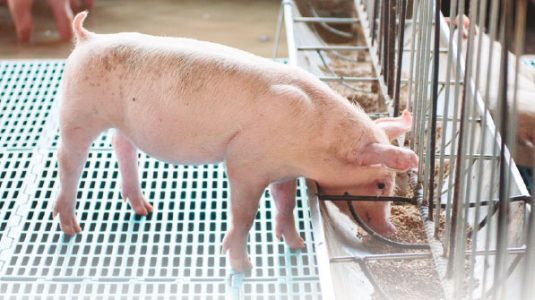
Conclusions
Weaning produces negative effects on the gastrointestinal system of piglets. In this regard, the inclusion of lignocellulose concentrate has a wide variety of beneficial characteristics that can help to counter such effects.
Lignocellulose should be considered as a tool that contributes to the reduction of antibiotic use in pig farms.
Due to its ability to stimulate the production of short-chain fatty acids, it can replace other additives that are included in feed with similar mechanisms of action.
Finally, the incorporation of lignocellulose in piglet diets can also generate an improvement in feed digestibility.
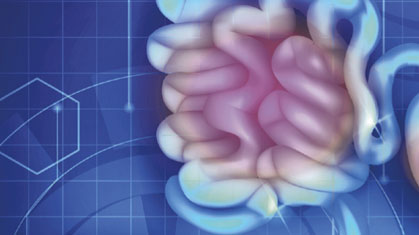
Source: This article was originally published as a Spanish content in NutriNews Spain September 2022

